Wasps are incredible architects that rid our yard of harmful pests and help pollinate our plants. But it is concerning to find a wasp nest. Here are 6 types of wasp nests and which species make them. Photos to help with wasp nest identification. And answers to common questions.
Wasps make nests from wood fiber and clay. They build their nest in trees and branches (bald-faced hornets), house eves (paper wasps), side of homes (mud daubers, potter wasps), and random holes and containers (yellowjackets). Some even excavate large holes in the ground (cicada killer wasps).
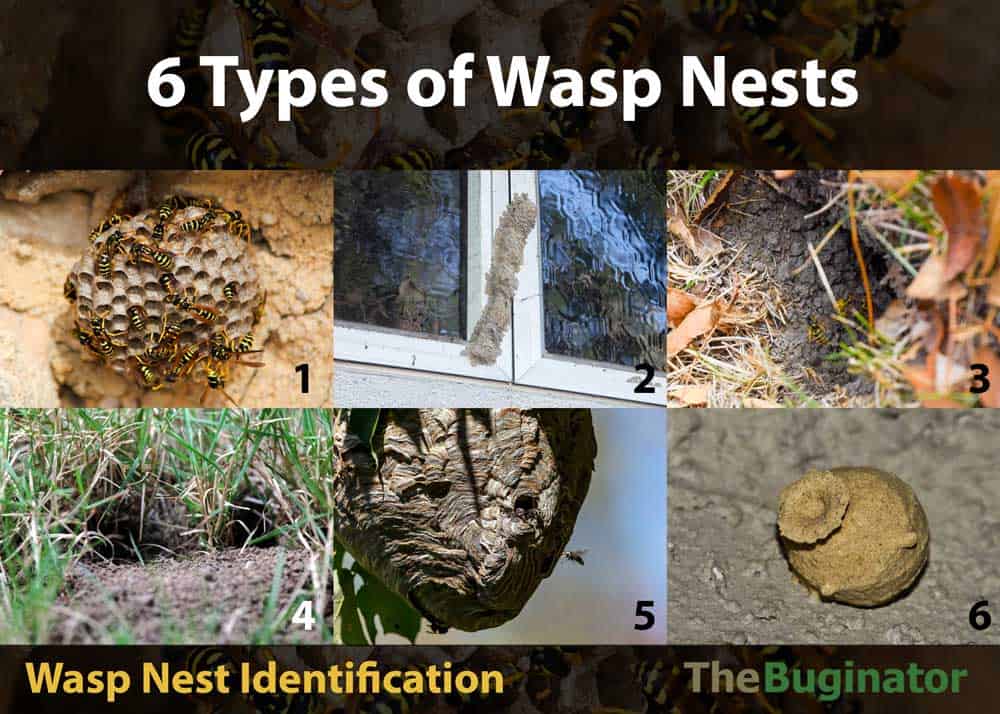
It’s understandable why a wasp nest on your home or in your yard is a cause of alarm. Some species of these highly territorial wasps can be aggressive. And they have large, smooth stingers that they can use multiple times to inflict pain several times greater than a honey bee.
Knowing the different types of wasps nests can help you decide what to do should you discover one on your property.
Table of Contents
Wasp Nest Identification: 6 Types
Here are six common types of wasp nests. Have one to add or a question? Please share it in the comments below!
1. Paper Wasp Nest
There are several paper wasps native to North America, the most territorial of which are red paper wasps.
Like the southern yellowjacket, paper wasps create mache-like nesting material by combining chewed wood with saliva.
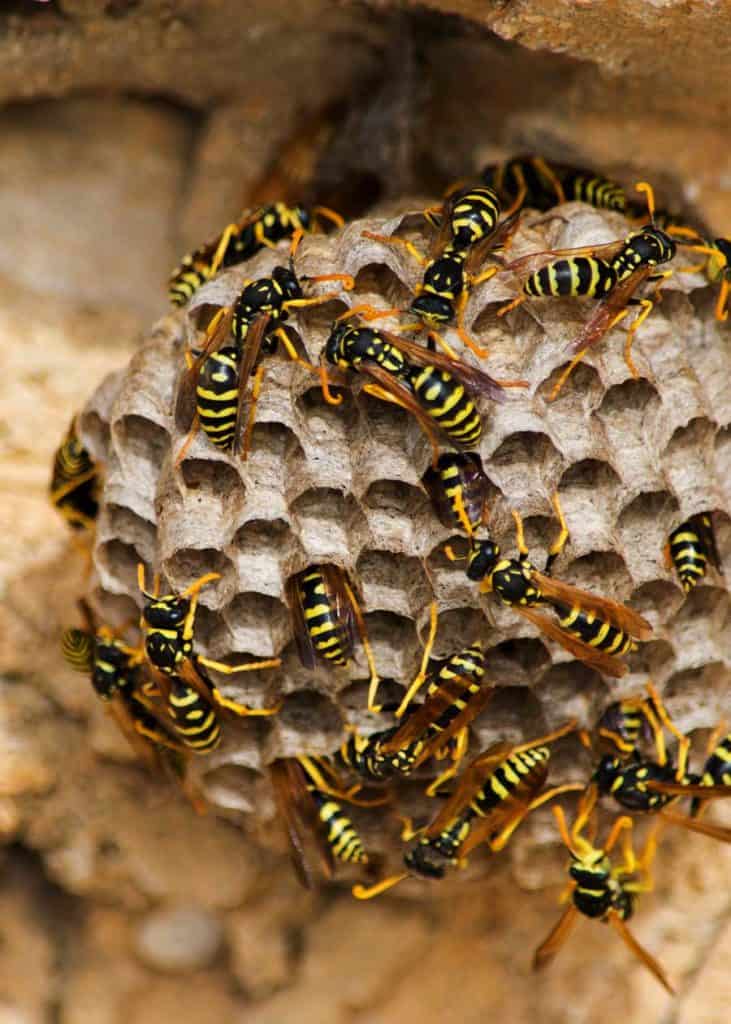
You’ll be able to tell the difference, though, as paper wasps build their much smaller, flattened, bowl-shaped nests without an outer covering, so the hexagonal egg brooding cells are visible.
They also prefer to build in the open, particularly under overhangs and house eaves.
Here’s what it looks like when wasps build their paper nest. I shot this video in my backyard.
Watch this baby wasp hatch from its nest. It is surrounded by numerous wasp larvae.
2. Mud Daubers Nest
Mud daubers are a slender wasp species, typically measuring no more than 1-inch in length. They have inky-black bodies with a yellow thorax, legs, and wings.
Unlike their yellowjacket cousins, mud daubers are relatively passive creatures who would prefer to avoid confrontation.
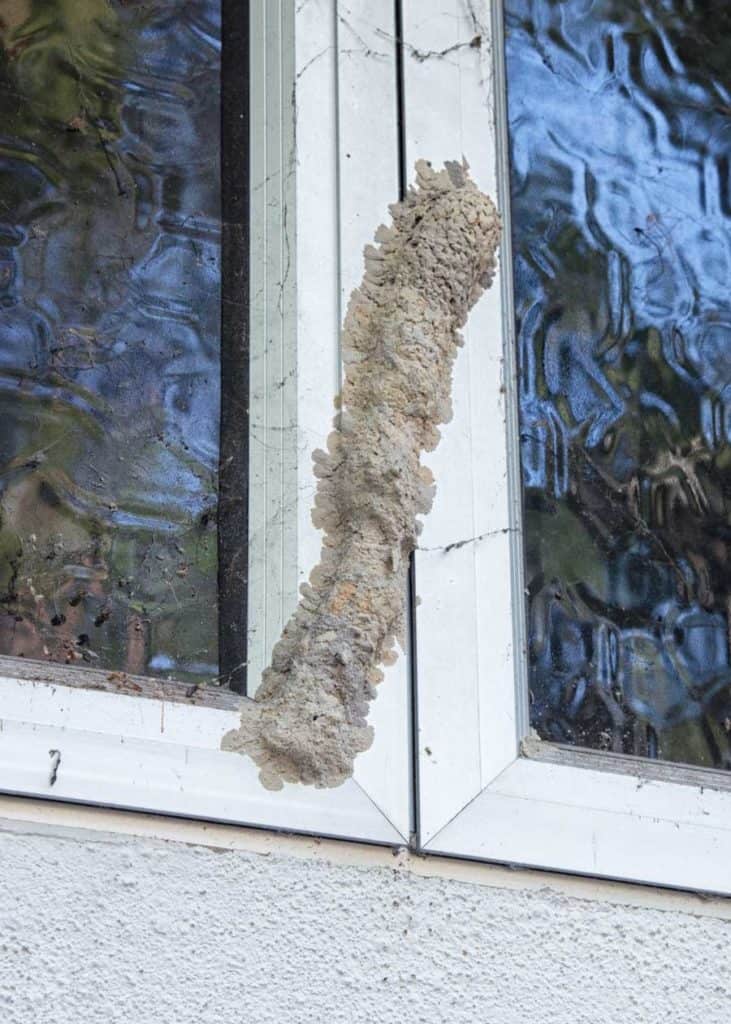
Of all the types of wasp nests, mud daubers’ may be the most interesting. The females build long, cylindrical cells made of dried mud, each containing a single egg.
You’ll find mud daubers nests on vertical surfaces like the sides of homes or sheds.
3. Southern Yellowjacket Nest
Notorious for their aggressive nature and tendency to swarm, the southern yellowjacket is a force to be reckoned with. They are up to ½-inch long and have smooth bodies with distinctive yellow and black stripes.
Yellowjackets prefer nesting underground, but you may also find them in tree hollows, empty plant pots, under the hood of disused vehicles, and similar undisturbed “cubby holes.”
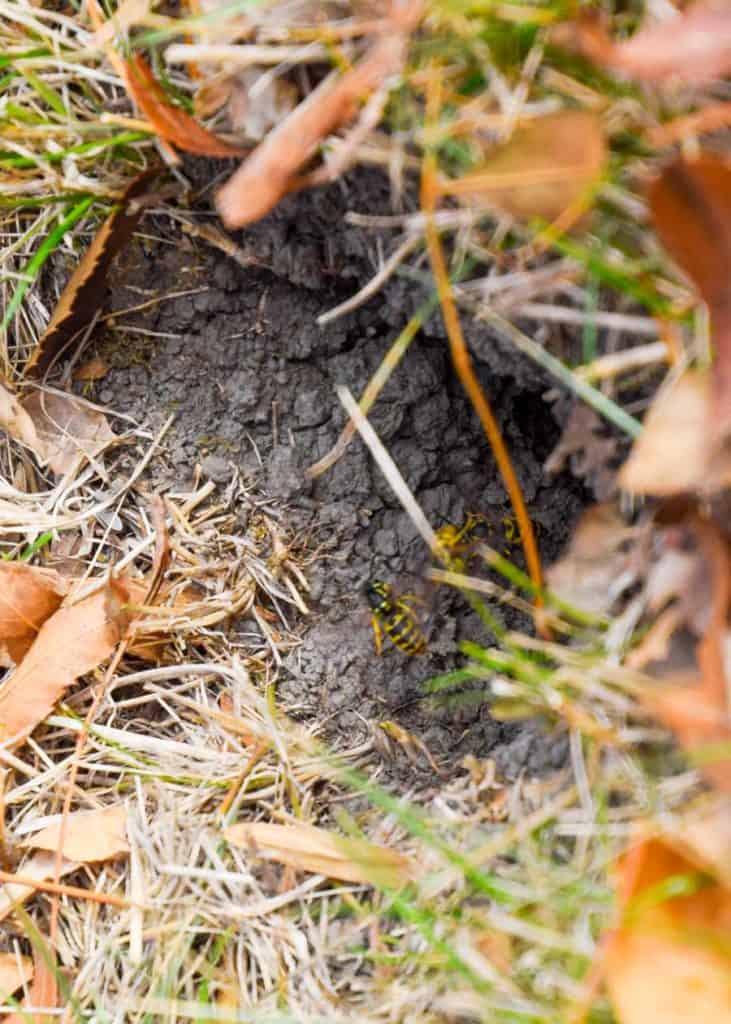
To create the structure, yellowjackets chew up plant fibers to create a greyish-brown papery substance that they apply in layers beginning in the early spring. It continues growing through the year until winter when the insects abandon it.
The nest is full of hexagonal cells for egg brooding, and the yellowjackets will defend their young with a vengeance.
4. Cicada Killer Wasp Nest
Cicada killer wasps are a large species, up to 2-inches long. You can identify them by their black and yellow-striped abdomen, lacy brown wings, and red legs.
Cicada killers nest in loose soil or sand, moving pounds of the substrate to form a series of deep burrows large enough to hold the paralyzed cicadas that newly hatched young eat.
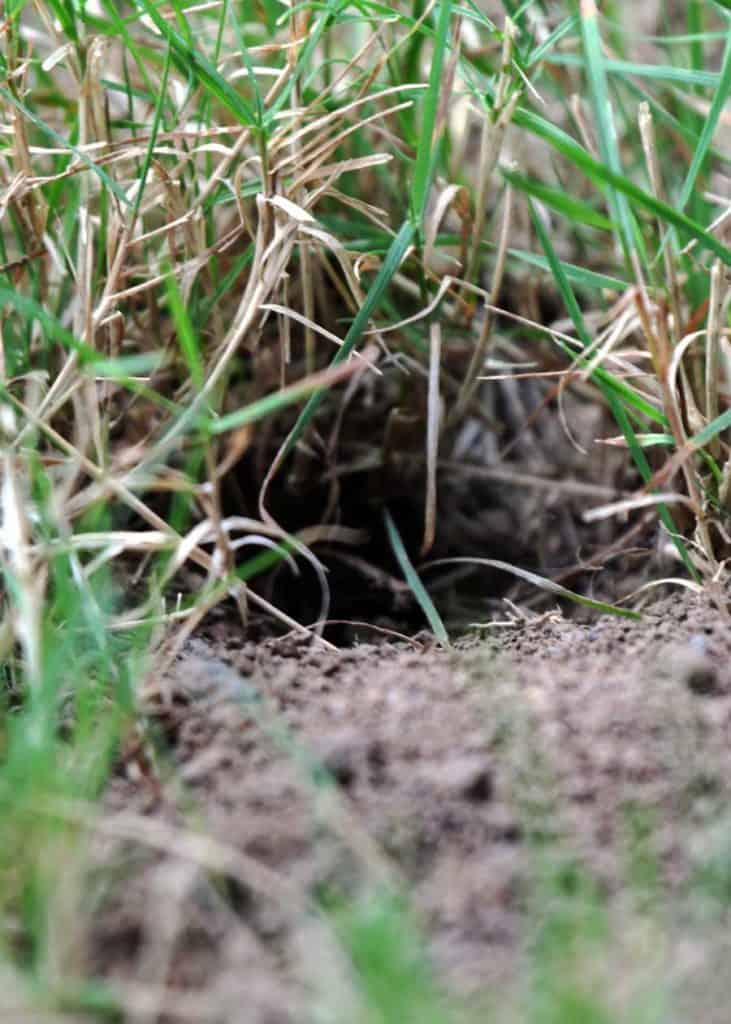
While you are unlikely to notice a single cicada killer wasp nest, it’s obvious when females have chosen to share a favored site. Their digging can push bricks out of walking paths or patios, interrupt root systems, and leave large piles of discarded soil near the nest entrance.
Cicada killer wasps are also known as ground hornets.
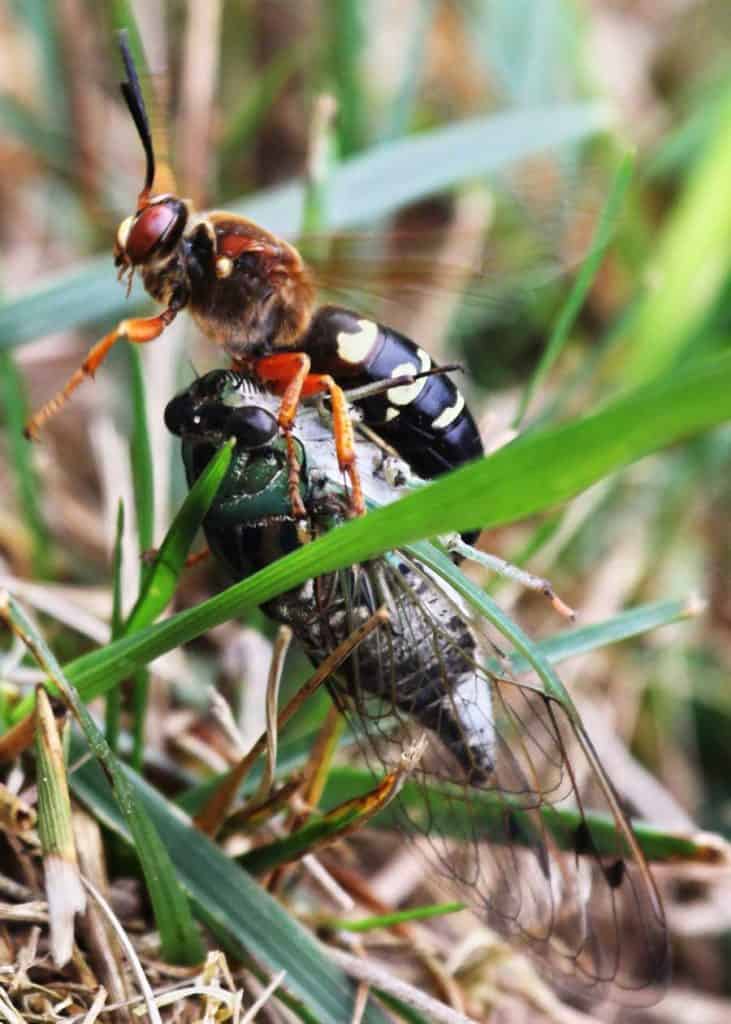
Wasps, including the ground hornet (cicada kill wasp), are beneficial insect predators.
5. Bald-Faced Hornet Nest
Bald-faced hornets build their nests off the ground, often in trees. They are grey in color and paperlike. But they have a distinctive look when compared to paper wasps for yellowjackets.
Bald-faced hornets are aggressive and can repeatedly sting without harming themselves. And they will attack in large numbers, posing a significant health risk to anyone who is targeted.
Nests can house more than 700 worker wasps.
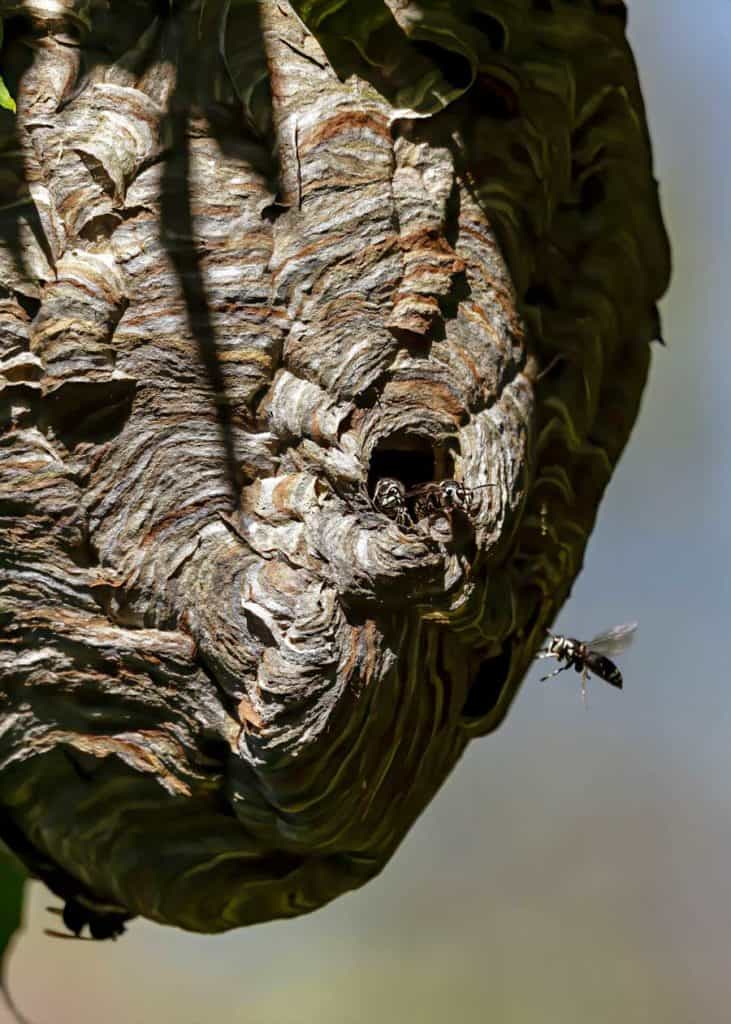
6. Potter Wasp Nest
This tiny wasp species usually grows to only ¾ -inches and has a black or brown body with yellow strips on all three sections. They are sometimes called “mason wasps.”
Potter wasp nests are distinctive, as they look like miniature clay pots with a small hole at the top.
Female wasps will build their nests on the walls of houses or underground, mixing dirt and water in their mouths.
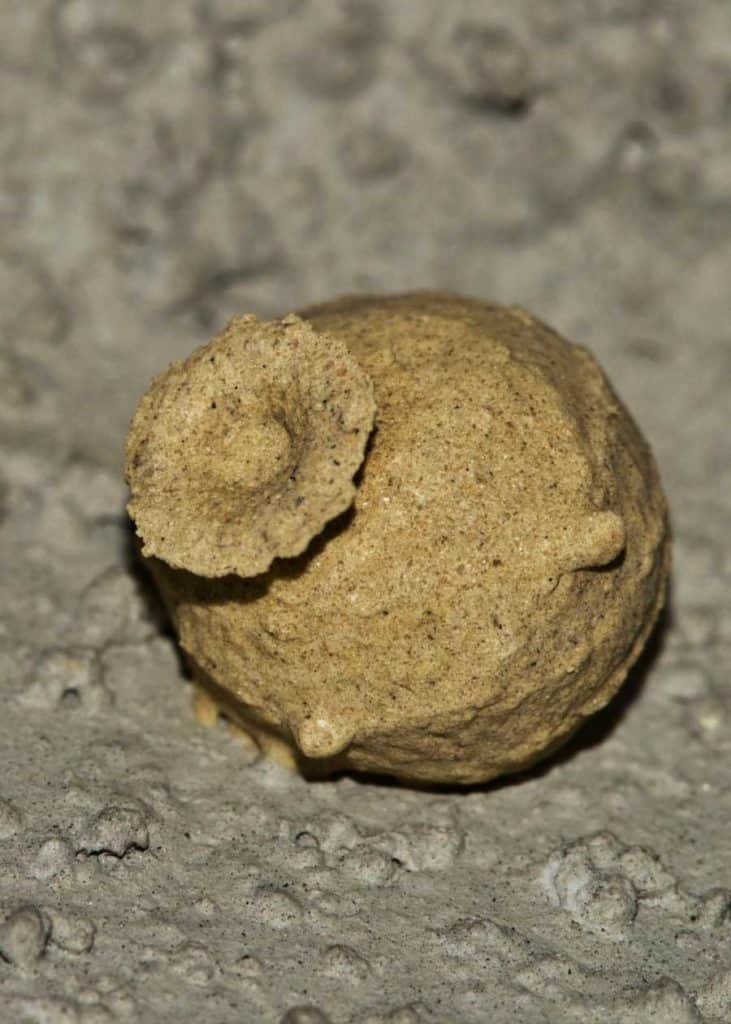
You may also find potter wasps reusing insect tunnels, nail holes, or masonry gaps, which females line with the mud mixture before filling the crevice with dead insects for the newly hatched larva to feed on.
Want to keep wasps away? Here are 13 wasp repellent plants for your backyard. And learn about essential oils that will repel wasps.
Frequently Asked Questions
Still not sure what to do about a wasp nest? These frequently asked questions can help you make the safest, most effective choice.
Should I remove wasp nests?
Deciding whether removal is necessary depends on which of the types of wasps nests you’re dealing with and the location relative to human activity.
Gentle, solitary species like mud daubers and cicada killers present a lower risk for you and your family while doing their part to keep pests at bay.
In other cases, such as southern yellowjackets and bald-faced hornets, you’ll need professional help to avoid an attack.
If the nest is very close to the house or play areas, you’ll want to remove the nest to avoid potential stings.
How do I get rid of wasp nests?
You have two main options for ridding your property of a wasp nest: Either hiring a professional service or doing it yourself.
If you choose to remove the nest yourself, it’s essential to be prepared and avoid alerting the wasps to your presence.
- Always deal with wasps at night when the swarm is least active.
- Dress in long sleeves, pants, gloves, and boots to protect your skin.
- Avoid alerting the insects by approaching quietly and putting a red filter on your flashlight.
- Spray inside the nest entrance with a commercial spray for several seconds, then quickly walk away.
- Stay out of the area for at least one day, observing from a distance for activity.
- Once it seems that the nest is dead, come back at night with a trash bag, place it around the nest, tie it off tightly, and throw it away in an exterior can with a lid.
Professionals are the safest route for huge nests, particularly aggressive species, or hard-to-reach areas.
Do you know the difference? Bee vs Wasp vs Hornet: 15 Ways to Identify
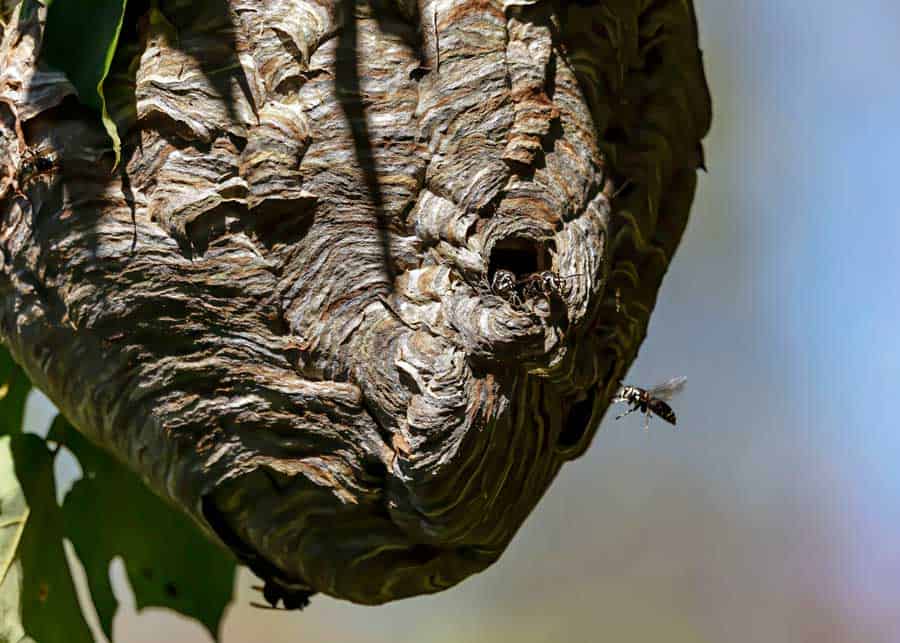
Keep Reading: What Eats Wasps? 37 Natural Predators
Your Turn
Have you seen these wasp nests around your home? Where are wasps building their nests in your area?
- About the Author
- Latest Posts
Bryan Haines is a co-founder and writer at The Buginator. And is working to make it the best resource for taking back the outdoors from biting, stinging pests.
He also blogs about travel at Storyteller.Travel and photography at Storyteller Tech. Bryan is a partner at Storyteller Media, a publishing company he runs with his wife, Dena.

Tenzi
Sunday 10th of September 2023
Hello, I am from Bhutan, I’ve this u usual wasp hive on my window and found it similar to the one you mentioned here. The hive looks like the bald-faced hornet, I’ve a toddler at home, and the hive is just on the window of our bedroom. Should we be concerned about that? Or is it okay to let it be Thanks
Diana
Friday 28th of April 2023
Hello! I found two identical nests that appear to be singular, the size of golf balls. I have good pictures. iNaturalist was not able to ID, although helpful. Nests do not appear to have an entry. It seems to be fibrous, almost like a croissant. One nest was at eye level on a rhododendron, the second also at eye level on an azalea. I assumed they were a fungus and clipped them at the base of the stalk, nests are still intact. Currently resting in an empty flower box. Than you.
Chris
Tuesday 27th of December 2022
I have lots of wasp and bee nests. Today I saw a type new to me- about 3inches wide, smooth & tan with one hole in the top. Very small black wasps with shiny yellow stripes. About 1/2 the size of most wasps. They didn’t seem disturbed by my close presence while I took pictures. Google didn’t help me ID, hope you can. Thanks Chris